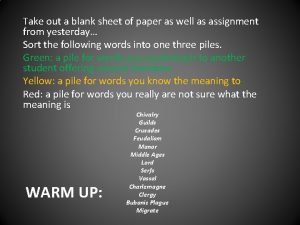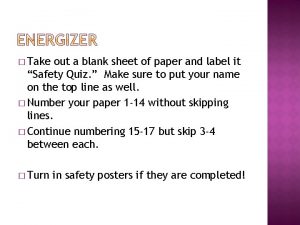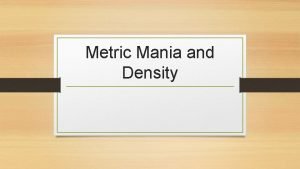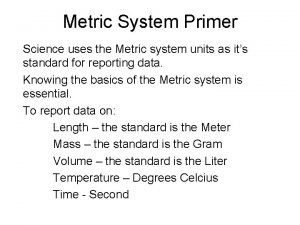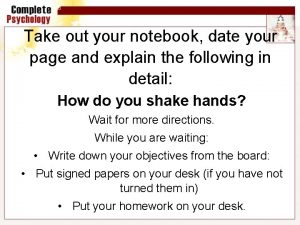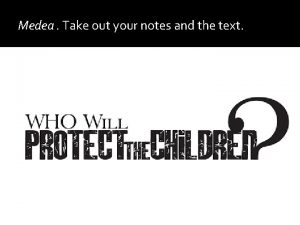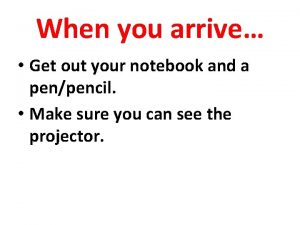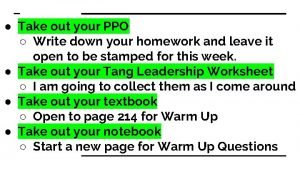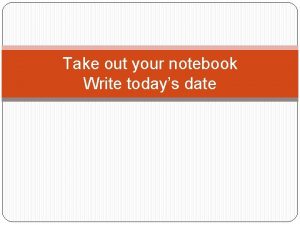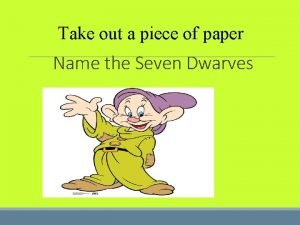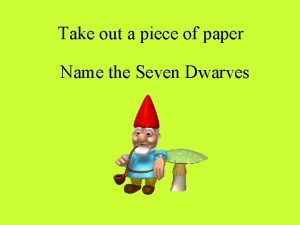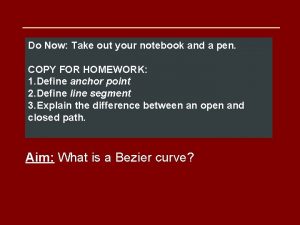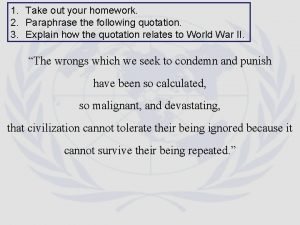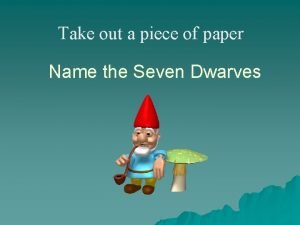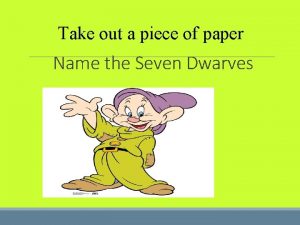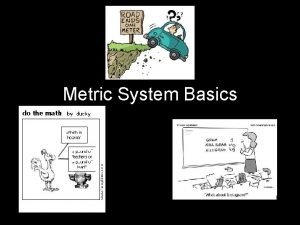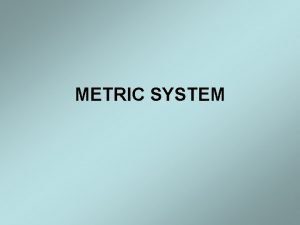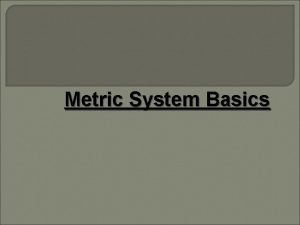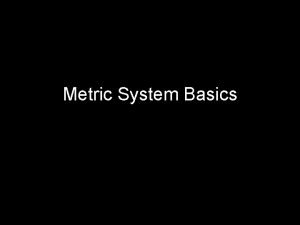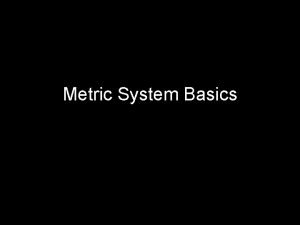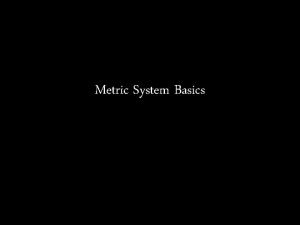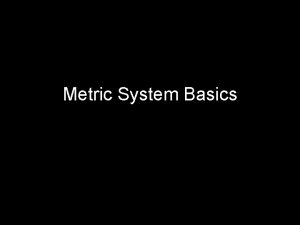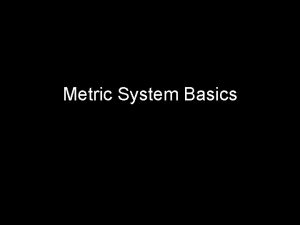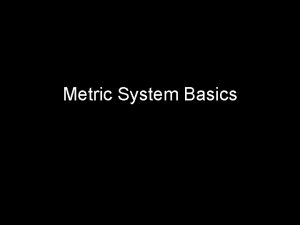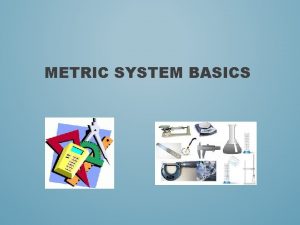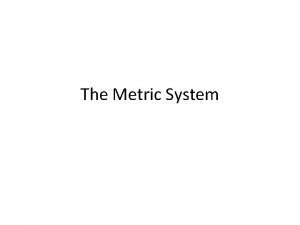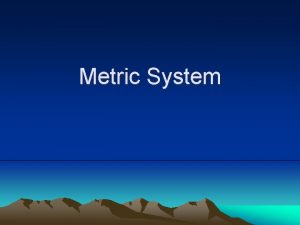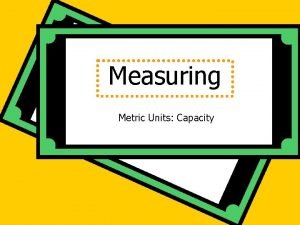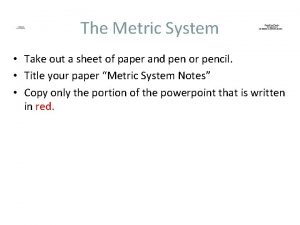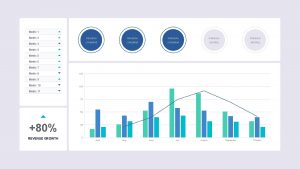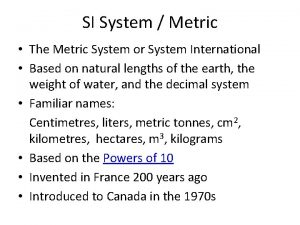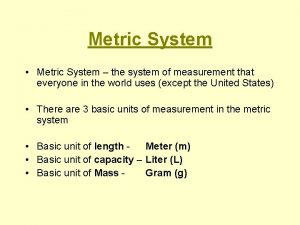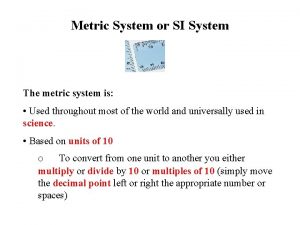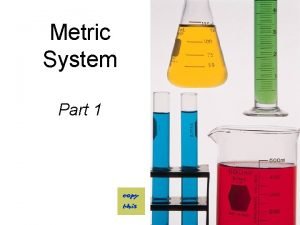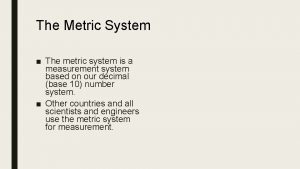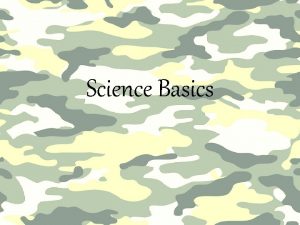The Metric System Take out a sheet of



























- Slides: 27

The Metric System • Take out a sheet of paper and pen or pencil. • Title your paper “Metric System Notes” • Copy only the portion of the powerpoint that is written in red.

What is the Metric System? The metric system is a system of measurement which was developed over many years, and traces its origin to a 1585 book entitled "The Tenth", by Simon Stevin, who suggested that a decimal system be used for weights and measures.

The Metric System • Metric System is a common language of measurement in science used all over the world.

The Metric System The US Congress amended the Metric Conversion Act of 1975 and designated the metric system as the preferred system of weights and measures for United States trade and commerce.

The Metric System Today, some business and technology companies in the USA use the metric system, and many products specify both. But most people have decided that the inconvenience of switching outweighs the benefits.

The Metric System Map of Nations that don't use The Metric System • Myanmar (Burma) • Liberia • The United States All countries colored in red choose not to use the metric system as their system of weights and measurements.

The Metric System is … - based on 10 - based on only three units of measure: the meter, liter, and gram

The Metric System • Meter-distance (instead of inch, foot, yard, or mile) • Liter-volume of liquids (instead of ounce, cup, pint, quart, & gallon) • Gram-mass (“weight”) (instead of ounces, pounds, and tons)

The Metric System • 1 meter = 100 • Prefixes are used to centimeters convert to smaller or larger units. • 1 meter = 1000 millimeters • Prefixes are the same for liters, grams, and meters. • 1 kilometer= 1000 meters • milli 1/1000 or. 001 • centi 1/100 or. 01 • kilo 1, 000

Lesson 1: Length T. Trimpe 2008 http: //sciencespot. net/

English vs. Metric Units Which is longer? A. 1 mile or 1 kilometer B. 1 yard or 1 meter 1 mile 1. 6 kilometers C. 1 inch or 1 centimeter 1 inch = 2. 54 centimeters 1 yard = 0. 9444 meters Left Image: http: //webapps. lsa. umich. edu/physics/demolab/controls/imagedemosm. aspx? picid=1167 Right Image: http: //share. lancealan. com/N 800%20 ruler. jpg

Metric Units The basic unit of length in the metric system in the meter and is represented by a lowercase m. Standard: The distance traveled by light in absolute vacuum in 1⁄299, 792, 458 of a second. Metric Units 1 Kilometer (km) = 1000 meters 1 Meter = 100 Centimeters (cm) 1 Meter = 1000 Millimeters (mm) Which is larger? A. 1 meter or 105 centimeters C. 12 centimeters or 102 millimeters B. 4 kilometers or 4400 meters D. 1200 millimeters or 1 meter

Measuring Length How many millimeters are in 1 centimeter? 1 centimeter = 10 millimeters What is the length of the line in centimeters? _______cm What is the length of the line in millimeters? _______mm What is the length of the line to the nearest centimeter? ____cm HINT: Round to the nearest centimeter – no decimals. Ruler: http: //www. k 12 math. com/math-concepts/measurement/ruler-cm. jpg

Lesson 2: Mass T. Trimpe 2008 http: //sciencespot. net/

English vs. Metric Units Which is larger? 1. 1 Pound or 100 Grams 1 pound = 453. 6 grams 2. 1 Kilogram or 1 Pound 3. 1 Ounce or 1000 Milligrams 1 ounce of gold = 28, 349. 5 milligrams 100 kilogram = 220 pounds

Metric Units Mass refers to the amount of matter in an object. The base unit of mass in the metric system is the gram and is represented by g. Since a gram is so small, we usually use kilograms, represented by kg. Standard: 1 kilogram is equal to the mass of the International Prototype Kilogram (IPK), a platinum-iridium cylinder kept by the BIPM at Sèvres, France. Kilogram Prototype Metric Units 1 Kilogram (kg) = 1000 Grams (g) 1 Gram (g) = 1000 Milligrams (mg) Which is larger? A. 1 kilogram or 1500 grams C. 12 milligrams or 12 kilograms B. 1200 milligrams or 1 gram D. 4 kilograms or 4500 grams Kilogram Prototype Image - http: //en. wikipedia. org/wiki/Kilogram

Measuring Mass • Find the mass by weighing the object on the digital scale. • Or, find the mass by using the balance.

Using a balance • Place the object in one tray. • Add the heaviest weight in the other. If it tips, add the next heaviest weight. • Continue adding weights until the scale balances. • Add all the weights up. The total is the weight of the object.

Lesson 3: Volume T. Trimpe 2008 http: //sciencespot. net/

English vs. Metric Units Which is larger? 1 fl oz = 29. 573 ml A. 1 liter or 1 gallon 1 12 -oz can of soda would equal approximately 355 ml. B. 1 liter or 1 quart C. 1 milliliter or 1 fluid ounce 1 quart = 0. 946 liters 1 gallon = 3. 79 liters It would take approximately 3 ¾ 1 liter bottles to equal a gallon.

Metric Units Volume is the amount of space an object takes up. The base unit of volume in the metric system in the liter and is represented by L or l. Standard: 1 liter is equal to one cubic decimeter Metric Units 1 liter (L) = 1000 milliliters (m. L) 1 milliliter (m. L) = 1 cm 3 (or cc) = 1 gram* Which is larger? A. 1 liter or 1500 milliliters B. 200 milliliters or 1. 2 liters C. 12 cm 3 or 1. 2 milliliters* * When referring to water Liter Image: http: //www. dmturner. org/Teacher/Pictures/liter. gif

Measuring Volume We use graduated cylinders to find the volume of liquids and other objects. Read the measurement based on the bottom of the meniscus (the curve). When using a real cylinder, make sure you are eye-level with the level of the water. What is the volume of water in the cylinder? _____m. L What causes the meniscus? A concave meniscus occurs when the molecules of the liquid attract those of the container. The glass attracts the water on the sides. Top Image: http: //www. tea. state. tx. us/student. assessment/resources/online/2006/grade 8/science/images/20 graphicaa. gif Bottom Image: http: //morrisonlabs. com/meniscus. htm

Measuring Liquid Volume Images created at http: //www. standards. dfes. gov. uk/primaryframework/downloads/SWF/measuring_cylinder. swf What is the volume of water in each cylinder? Pay attention to the scales for each cylinder.

Measuring Solid Volume 9 cm We measure the volume of regular object using the formula length x width x height. 8 cm _____ X _____ = _____ We measure the volume of irregular object using water displacement. Amount of H 2 O with object = ______ About of H 2 O without object = ______ Difference = Volume = ______ Click here for an online activity about volume. Choose Lessons Volume & Displacement http: //resources. edb. gov. hk/~s 1 sci/R_S 1 Science/sp/en/sy llabus/unit 14/new/testingmain 1. htm 10 cm

Metric Conversions Ladder Method T. Trimpe 2008 http: //sciencespot. net/

Ladder Method 1 2 KILO 1000 Units HECTO 100 Units 3 DEKA 10 Units Meters Liters Grams DECI 0. 1 Unit How do you use the “ladder” method? 1 st – Determine your starting point. 2 nd – Count the “jumps” to your ending point. 3 rd – Move the decimal the same number of jumps in the same direction. CENTI 0. 01 Unit MILLI 0. 001 Unit 4 km = _____ m Starting Point Ending Point How many jumps does it take? 4. __. __. = 4000 m 1 2 3

Conversion Practice Try these conversions using the ladder method. 1000 mg = _______ g 1 L = _______ m. L 160 cm = _______ mm 14 km = _______ m 109 g = _______ kg 250 m = _______ km Compare using <, >, or =. 56 cm 6 m 7 g 698 mg
 Take out a sheet of paper
Take out a sheet of paper Take out a sheet of paper
Take out a sheet of paper Songs with poetic devices
Songs with poetic devices Metric mania
Metric mania English system of measurements
English system of measurements Metric system vs american system
Metric system vs american system Take a bus or take a train
Take a bus or take a train Take out your notebook
Take out your notebook Take out your homework
Take out your homework Take out your notebook
Take out your notebook Medea notes
Medea notes Signing naturally 9.10 minidialogue 2
Signing naturally 9.10 minidialogue 2 Checked homework
Checked homework Friction
Friction Take out your homework
Take out your homework Take out your homework
Take out your homework Take out your notebook
Take out your notebook Take out your homework
Take out your homework Fulcrum load
Fulcrum load Translate
Translate Take out a piece of paper
Take out a piece of paper Take out a piece of paper
Take out a piece of paper Take the sh out of it
Take the sh out of it Take out your notebook
Take out your notebook Take out a piece of paper
Take out a piece of paper Take out your homework
Take out your homework Take out a piece of paper
Take out a piece of paper Take out a piece of paper
Take out a piece of paper
